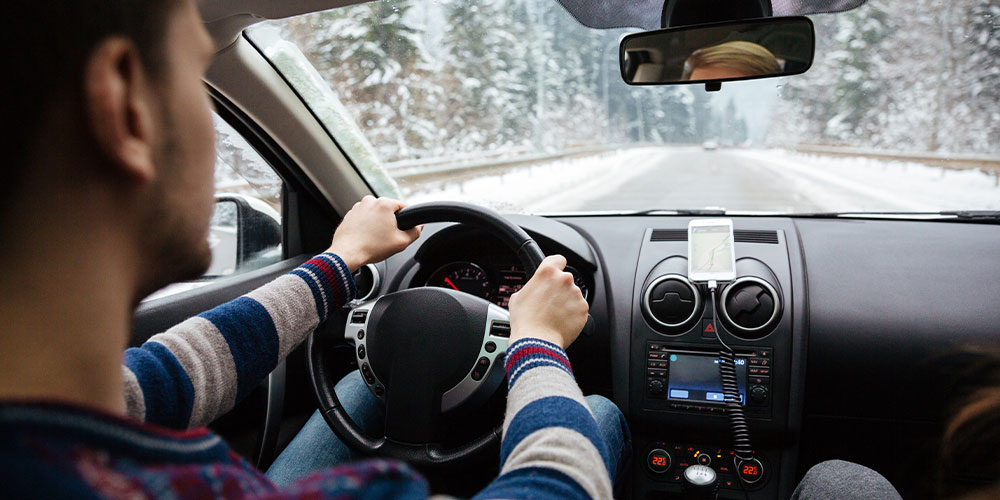Winter driving in St. Paul can be tricky, as the weather can change quickly and snow-covered roads present unique challenges. Whether you’re a wintertime veteran or brand new to winter driving, it is important for all drivers to understand the risks and dangers associated with winter driving in St. Paul, Minnesota.
Various factors can make it challenging with cold weather, snow, ice, and other hazards that can be present on the roads. However, with the right precautions and driving techniques, you can stay safe and avoid accidents while driving in the winter.
Before you hit the road, it's important to make sure your car is ready for winter driving. This includes checking your tires, brakes, and fluid levels, and ensuring that all your lights and wipers are in good working order. If you live in an area with heavy snowfall, you may want to consider installing winter tires or chains on your vehicle to improve traction.
It's also a good idea to keep an emergency kit in your car that includes a flashlight, blanket, warm clothing, food, and water in case you get stranded due to bad weather or a breakdown.
Once you're on the road, be sure to take it slow and increase your following distance. Snow and ice can make roads slippery and reduce traction, so it's important to give yourself plenty of time to stop. Use your headlights and turn signals to help other drivers see you, and be on the lookout for black ice, which is a thin, transparent layer of ice that can be difficult to see.
If you do encounter slippery conditions, avoid sudden movements and try to steer gently in the direction you want to go. Avoid braking or accelerating too quickly, as this can cause you to lose control of your car. If you start to skid, take your foot off the accelerator and steer in the direction you want the front of your car to go.
Finally, be sure to stay alert and avoid distractions while driving in the winter. Put away your phone and other distractions, and stay focused on the road. If you feel tired, take a break and find a safe place to rest before continuing your journey.
By following these tips, you can help ensure that you arrive safely at your destination and avoid accidents during the winter months.
Be Prepared for Hazardous Road Conditions
St. Paul winters are unpredictable; one day may bring dry pavement and the next a dusting of snow or slushy ice covering much of the roadway. When bad weather strikes, you need to ensure your vehicle is prepared for hazardous road conditions – tires should have good treads, windshield wipers should be working properly, brakes and antilock brakes should be checked regularly and headlights/taillights should work optimally when visibility dwindles during blizzards or snowstorms. Drive slowly and remain aware of icy patches or hidden curves that can lead to an accident if navigated incorrectly. Keeping an eye on other drivers actions can also prevent you from getting into an unexpected crash.
Be Aware of Blind Spots
Snow plows create large drifts across roadways that obscure drivers’ vision while motorists are approaching or at intersections; these whiteouts can create significant blind spots born out of slushy ice caused by cars spinning their wheels on rutted roads. At such times, increase your following distance from other vehicles around you, reduce your speed below the posted limit, check for any cross traffic before proceeding through intersections safely and use turn signals early when changing lanes – even if there are no other cars on the road!
Avoid Unnecessary Driving Whenever Possible
When possible avoid driving altogether! Consider alternative travel options like carpooling with those travelling in similar directions or taking public transport via bus or train instead when necessary trips arise; most types of commuting networks operated by metro agencies are equipped with sophisticated technologies that track current location of buses allowing passengers greater flexibility than ever before to monitor their commute schedules with convenience. This reduces fuel emissions generated by continuous driving while simultaneously safeguarding against individual driver negligence in inclement conditions as well as making timely transportation less expensive.
Stay Alert Around Low Visibility Areas
Low visibility areas such as construction zones become increasingly difficult to navigate during wintry months due to potential low traction between vehicles tires and wet pavement while turning corners at high speeds — always exercise caution when passing through construction sites even during ideal sunny days (double this caution on wetter days) as many city streets feature intermittent orange cones which direct traffic masterfully but cause additional worries for night time commutes particularly due to decreased lighting providing a more tricky premise for spectators attempting regular street navigation through hazardous environments.
Contact Us Today If You've been in and Accident
If you do get into a fender bender or slide off the road be sure to contact us immediately to schedule an appointment. You may not feel injured but it's important to do an exam to ensure you don't suffer from any long-term issues down the road. Treatments are covered by PIP Insurance so you won't have any out of pocket expenses.




